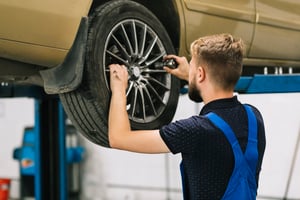In the location of car preservation, alloy wheels are every a realistic and aesthetic asset for...
How Alloy Wheel Repair Technology is Evolving

Alloy wheels, identified for his or her aesthetic appeal and overall performance advantages, have emerged as a staple in modern cars. As they enhance an automobile's look and management, preserving its condition is important. Alloy wheel repair generation has visible extensive improvements, addressing problems from minor scuffs to important harm. This article explores the trends in the alloy wheel repair era, supplying insights into how those innovations are remodeling the employer.
Advancements in Alloy Wheel Repair Techniques
Alloy wheel repair has advanced notably with technological improvements. Traditional strategies, which regularly worried guide sanding and repainting, were changed through the manner of extra latest strategies. Modern alloy wheel repair technology consists of superior laser alignment and automated systems. These innovations make certain precise repairs, decreasing the likelihood of everyday troubles. Laser-guided structures help in figuring out structural damage with immoderate accuracy, taking into consideration targeted repairs that maintain the wheel’s integrity.
Integration of Smart Technology in Repair Services
The integration of clever generation has revolutionized alloy wheel repair services. Mobile apps and online systems now permit users to e-book repair offerings and tune the improvement of their upkeep in actual time. These structures often use AI to diagnose wheel harm from pix, presenting initial estimates and provider guidelines. Additionally, a few repair services now make use of automatic machines that can perform duties like polishing and refinishing with minimum human intervention, ensuring regular consequences and advanced performance.
Eco-Friendly Practices and Sustainable Materials
Sustainability is becoming more and more essential in alloy wheel repair. New technologies are focusing on decreasing the environmental effect of repair methods. Eco-pleasant practices include the use of low-VOC (risky natural compounds) paints and recycling broken alloy wheels for remanufacturing. These practices no longer handiest reduce the environmental footprint but moreover enhance the overall repair way. Innovations in materials, consisting of the development of more long-lasting and green coatings, in addition, contribute to the sustainability of alloy wheel repair.
Cost-Effective Solutions and Consumer Benefits
As alloy wheel repair technology advances, powerful solutions are becoming greater famous. Advances in repair techniques have reduced the time and hard paintings required for upkeep, which translates into decreased charges for clients. Additionally, new technology decorates the best of repairs, extending the lifespan of alloy wheels and enhancing car performance. This manner that vehicle proprietors can experience notable upkeep without breaking the bank, making alloy wheel upkeep more to be had and less costly.
The Future of Alloy Wheel Repair: What’s Next?
Looking forward, the future of alloy wheel repair is poised for exciting tendencies. Emerging technologies, which incorporate three-D printing, ought to soon play a function in repairing or maybe growing custom alloy wheels. These advancements promise to in addition decorate the precision and overall performance of repairs, making an allowance for extra customized answers. Additionally, ongoing studies into new materials and repair techniques will in all likelihood cause even greater long-lasting and environmentally pleasant alternatives, ensuring that alloy wheel repair maintains to adapt consistently with the latest technological dispositions.
FAQs
What is the modern-day technology used in alloy wheel repair?
Recent improvements include laser-guided systems for precision upkeep, clever technology for diagnostics and service monitoring, and automated machines for polishing and refinishing.
How has alloy wheel repair come to be more green?
Eco-pleasant practices embody the use of low-VOC paints, recycling damaged wheels, and growing long-lasting, inexperienced coatings to decrease environmental effects.


